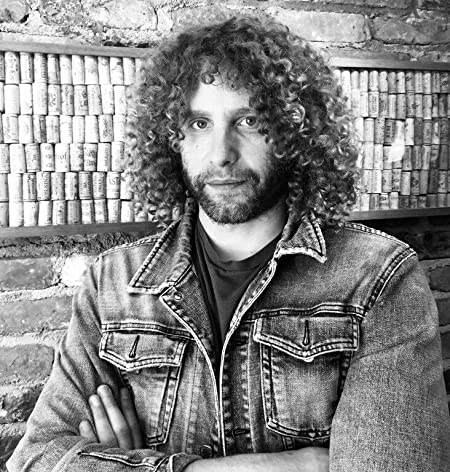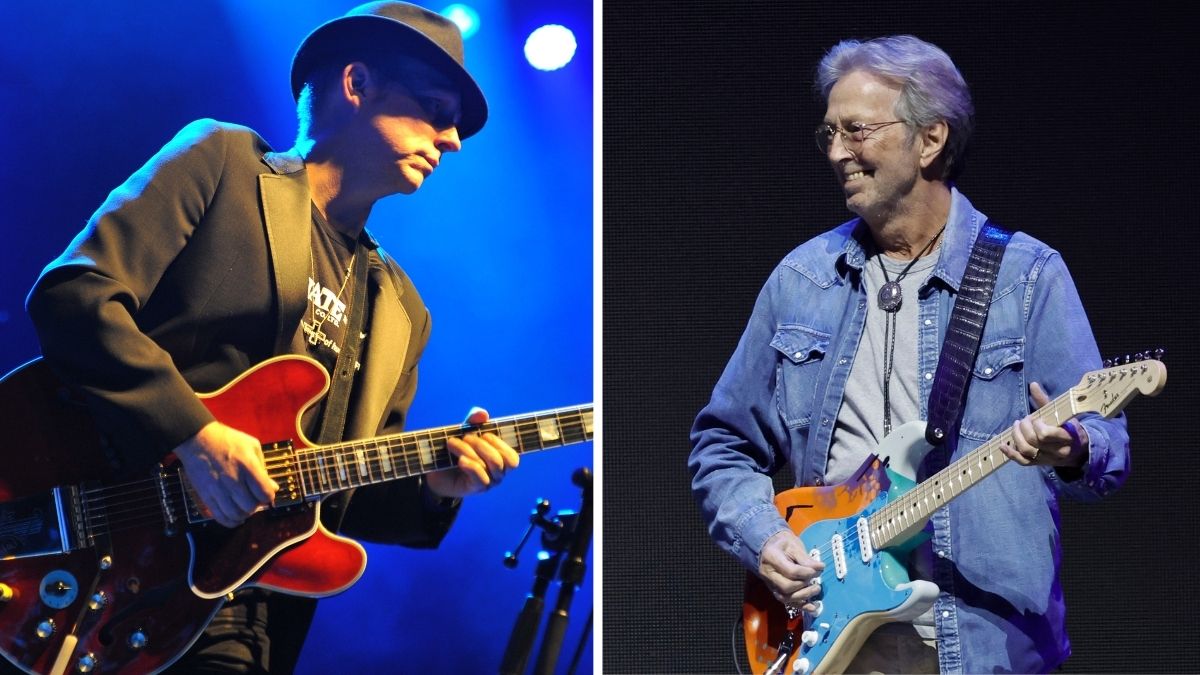“Every tour was the best I could have done. It was only after that I would listen to more Grateful Dead and realize I hadn’t come close”: John Mayer and Bob Weir reflect on 10 years of Dead & Company – and why the Sphere forced them to reassess everything
In this exclusive interview, Bob Weir and John Mayer break down the Sphere experience, latest gear adjustments and their ever-evolving musical partnership and float the possibility that they'll enter the studio one day
![John Mayer and Bob Weir [left] of Dead & Company photographed against a grey background. Mayer wears a blue overshirt and has his signature Silver Sky on his shoulder. Weir wears grey and a bolo tie.](https://cdn.mos.cms.futurecdn.net/C6niSAybzVCHoYcpJ8ZZgE.jpg)
This year marks a decade since John Mayer teamed up with Grateful Dead singer and guitarist Bob Weir and drummers Mickey Hart and Bill Kreutzmann to breathe new life into the band’s iconic catalog under the Dead & Company moniker.
At the time, it felt like a curious, if intriguing combination – a guitar prodigy with pop chops pairing with the legendary Dead members. But what has unfolded over the past 10 years is nothing short of remarkable.
The band, rounded out by bassist Oteil Burbridge, keyboardist Jeff Chimenti and, more recently, drummer Jay Lane (who stepped in full time for Kreutzmann in 2023), has transcended its incongruous origins and become a genuine force in its own right, establishing itself as a must-see summer stadium draw – one that’s kept the Grateful Dead’s exploratory, improvisatory and highly musical spirit alive while forging a path forward with an energy all its own.
In 2023, Dead & Company embarked on what was billed as the “Final Tour,” capping a years-long run that saw the group play to an estimated four million-plus fans since those first 2015 shows. But while it seemed like the ’23 outing was it for this other one, Dead & Company soon set out to explore a new frontier: a residency at Sphere, the cutting-edge Las Vegas venue known for its state-of-the-art technology.
Among its many innovations is a massive 160,000-square-foot LED screen that encircles both the audience and the band, along with an unparalleled sound system – the largest concert-grade audio setup in the world – featuring spatial audio, haptic technology and more than 167,000 individual speaker drivers.
At first glance, this ultra-modern setting might seem a mismatch for a legacy band with deep roots in traditional music. But it’s actually a perfect pairing. “We were doing liquid projections on screens and stuff like that, where the visuals could move in time with the music, back in the ‘Acid Test’ days,” Weir points out. Those days, it’s worth noting, were more than a half-century ago.
The Sphere residency, titled “Dead Forever,” spanned 30 shows from May to August in 2024. Mayer was the driving creative force behind the production, and the singer and guitarist skillfully balanced tradition and innovation, staying true to the band’s roots while embracing the futuristic nature of Sphere’s immersive visuals and sonics.
All the latest guitar news, interviews, lessons, reviews, deals and more, direct to your inbox!
As he puts it to Guitar World, the goal was to find a sweet spot “between Monster Mash and 2001: A Space Odyssey.” It’s a fine line, but one he and the band navigated expertly. Sphere’s technology allowed Dead & Company to create breathtaking, dynamic visuals that amplified their performances, but Mayer and the band ensured the feeling stayed grounded – warm, human and connected to the core of their music.
Dead & Company’s run at Sphere was an incredible success, and it’s possible that of the handful of bands who have appeared there, they may have been the most effective at weaving the venue’s unique features into the fabric of their performance. So it wasn’t surprising that they decided to return.
I suppose one thing I learned was that in terms of sensory experience, the audience can handle more
John Mayer
In March of this year, the band launched a second Dead Forever residency, scheduled to run until May. This time, they’re coming in as Sphere veterans. “So we’ve already learned what we can get away with and what we can’t get away with,” Weir says.
For Mayer, it’s an opportunity to further the blend of “heritage and futurism” they explored last year. Sphere, he says, “really wants to be futuristic, so it’s cool to also pull the storytelling back into something really human.
”This run has even more beautiful, situational places to hang out under the Sphere; there’s a lot more feeling like you’re somewhere organic and warm. It’s an opportunity to make more worlds out of the ones we liked a lot and really fell in love with during the shows last year, where you go, ‘Ahh, here it is…’”
Ultimately, the Sphere shows are a natural extension of what Dead & Company is all about. “With this band, we’re able to open a portal,” Mayer says. “And if it’s not a portal to go back in time, it’s a portal to enter those feelings that you didn’t think you could go back and feel again.” Those feelings, much like the music, clearly still strike a deep chord with fans.
Prior to the kickoff of the current residency, Mayer and Weir sat down with Guitar World to discuss a range of topics, including adjusting to the audio and visual demands of the Sphere experience, their guitar playing and gear, and how their musical partnership has evolved over the past decade together.
They also touched on the possibility of, for the first time, bringing Dead & Company’s music from the stage to the studio. Two years after the Final Tour, it’s clear that the phrase “Dead Forever” continues to ring true.”
You’re back for Round 2 at Sphere. I can imagine that building and pulling off the shows last year was a massive undertaking. Did any lessons or insights from that experience shape how you approached this one?
John Mayer: “I suppose one thing I learned was that in terms of sensory experience, the audience can handle more. The first time through, I was being very careful about not disorienting anybody with what the Sphere does or can do.
“But I think I learned that having your senses pushed a little further, but not to the breaking point, the audience can handle it – and wants a little more of it. In terms of motion [of the visuals], you do have to keep it under a certain threshold. But as far as what kind of motion, I feel like people want a little bit of a thrill ride. So we’ll push that just a little bit more this time.”
![John Mayer and Bob Weir [left] of Dead and Company both play a D'Angelico archtop. Mayer picks the strings, Weird frets a chord.](https://cdn.mos.cms.futurecdn.net/hmecdqmr22NfM7cfthq32d.jpg)
The concert experience at Sphere is often looked at from the fan’s perspective, but I’m curious – what’s it like for you onstage, especially in comparison to a regular Dead & Company show?
Bob Weir: “As far as the experience of playing, I expect it is different, but I can’t really quantify or qualify how it’s different. We still have our sight lines. John and I still look at each other, we still take each other’s facial expressions into consideration when we’re playing something, all that stuff.
“For what it’s worth, I can’t see what everybody else is seeing of John, which is, you know, his head 30-feet wide on the screen behind me. [Laughs] That particular camera angle, that’s not how I’m seeing him. But that would be great if I could watch him like that, if I could see what everybody else is seeing…”

Is there anything unique about how you interact with the audience, or with the visuals?
The Sphere becomes kind of like this big elephant at the circus that we work with. I think that’s a pretty fair metaphor. It’s this massive thing you have to respect, but it’s a part of our show
John Mayer
Mayer: “The first show, I remember we played Mississippi Half-Step and the crowd was roaring. The energy really hyped us up – so much so that I think we kind of had a hard time putting the song where we wanted to put the song. But over the next two shows we began to learn that the Sphere is our friend. It’s our colleague.
“We know the crowd’s going to ooh and aah, so we don’t have to – we can continue to keep our energy where we want it. Then the Sphere becomes kind of like this big elephant at the circus that we work with. I think that’s a pretty fair metaphor. It’s this massive thing you have to respect, but it’s a part of our show. You almost want to pat the side of the Sphere and go, ‘Good girl, good girl.’
“So it took us about one weekend to learn how to keep our breathing slow, keep our tempo right, even though we know that what’s happening out there is incredibly dynamic. We had to learn to separate the musical dynamic from the visual dynamic.
“But when we figured that out, then things got sensational, because we could continue to make the music at our own tempo, in our own dynamic, knowing that it was merging with what was happening out there.”
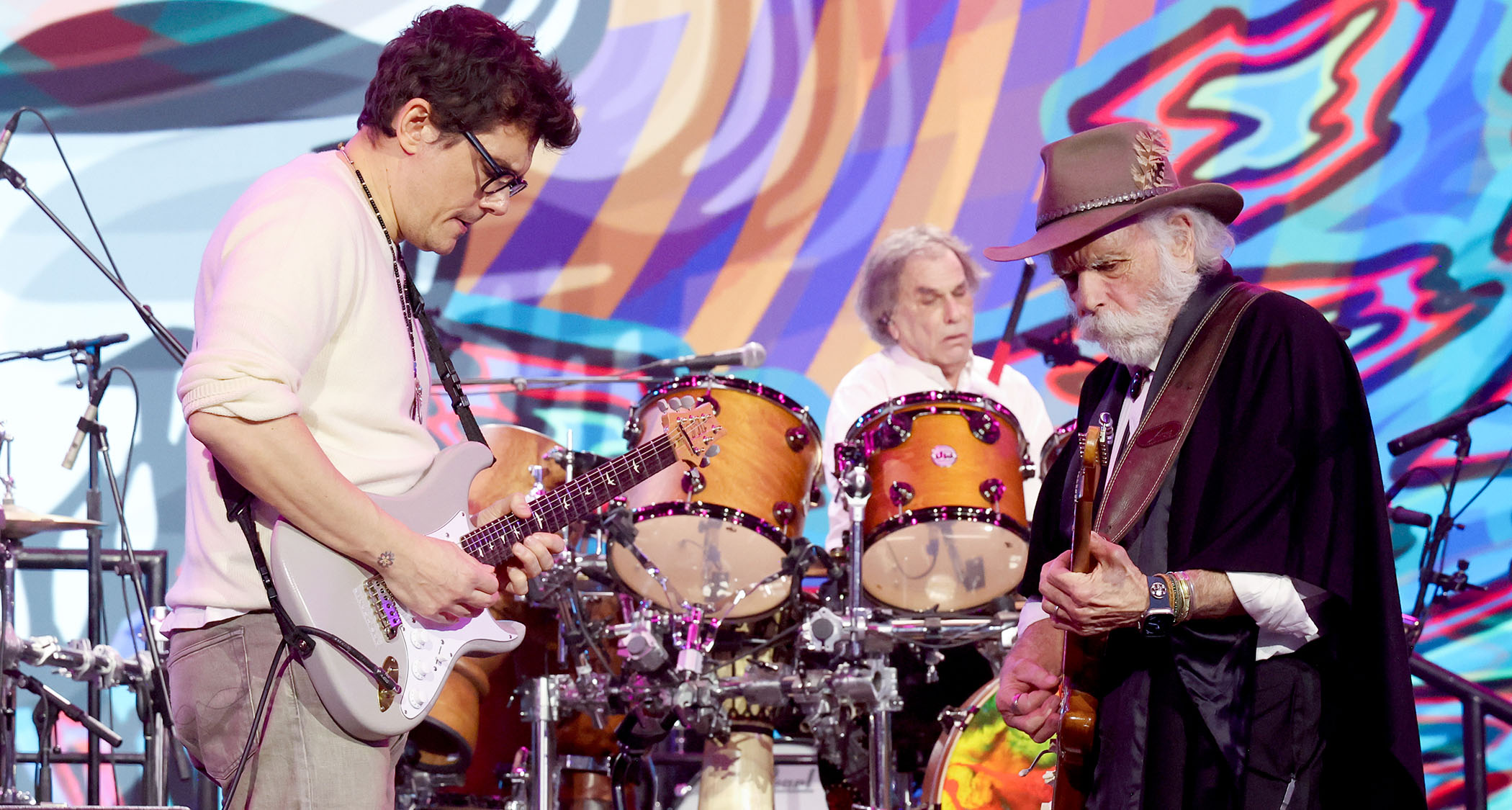
Did you have a favorite moment in the show during the first run?
When I walk onstage, I walk into a hallucinogenic realm. I’m gone. I’m as out-there as a fellow gets
Bob Weir
Mayer: “There are only a couple of times where I will let myself be a part of the experience the fans are having. One particular part that I was just so mesmerized by was when we return back to Earth [toward the end of the show], and we move through this particle field.
“I look up and feel it come over my head, and I take that time every night to be swept away by it. It’s like, for one moment I get high on my own supply. [Laughs] And then I go back to the thing.”
How about you, Bob? Are there times when you find yourself getting caught up in the visuals?
Weir: “Yes… but really, when I walk onstage, I walk into a hallucinogenic realm. I’m gone. I’m as out-there as a fellow gets, and I’m not sure I’m even going to notice the tech. We do have to watch the visuals at the beginning and the end of the show, because we have to time everything.
“But the visuals probably hit anybody else in that place harder than they do the people onstage, because the average guy onstage is in a hallucinogenic realm to begin with. That’s the nature of our business.”
![John Mayer wears a grey hoodie and plays a PRS as he james with Bob Weir [Left] during a Dead and Company show.](https://cdn.mos.cms.futurecdn.net/C45h3S4Qk2Jw2skSAHTAUB.jpg)
What has been your experience from an audio perspective?
Weir: “Well, the sound is real good in there. But I did have to make my peace with in-ears. We have to use them, because the Sphere is basically the world’s largest hard, parabolic, reflective surface, and it’s all pointed directly back at you.
“And with that comes a report that’s somewhere in the neighborhood of a third of a second that’s every bit as loud as anything that happens onstage. And it’s almost always out of time with the song you’re playing. So there’s various things you can do.
“Overhead microphones, for instance, will hear nothing but slapback. And if you have them in your [onstage] mix, if you’re listening to the drums, for instance, you’re getting at least half slapback. And that’s not what you want to hear, because that slapback is almost always out of time with the song. So we went to electronic cymbals, and we didn’t have to deal with overhead microphones. And we went to in-ears.”

Other guitarists who’ve performed at Sphere, like the Edge and Phish’s Trey Anastasio, have noted that the venue’s unique design makes it challenging, and also somewhat unnecessary, to use traditional amps onstage. The Edge, in particular, mentioned switching from tube amps to Universal Audio amp sim pedals for his setup.
Weir: “Well, you know, at first I had all this stuff with me – an iso chamber with a guitar amp in it, all of that. But very quickly, I was done with it. It was just not necessary.
“Instead, I’ve been using the Universal Audio Ruby, which is basically a [Vox] AC30 in a stompbox. I couldn’t have imagined when I first walked in there that that was going to be pretty much all I’d need. It turns out it was pretty much all I needed. [Laughs]”

Was that a big change from, say, your rig on Dead & Company’s 2023 stadium tour?
Weir: “Actually, on that tour I was using the UA Ruby pretty predominantly, too. In fact, I might have been using it pretty much exclusively. Now, I use a little bit of signal processing, but not much.
“With the amount of high-end that I use on that Ruby, I find that signal processing in general is not a good idea, because I can articulate all the information from the string better if I just let the string speak.
“Other than that, I used compression – I have UA’s 1176 [Studio Compressor pedal], a tiny bit of reverb, and that’s pretty much it.”
John, you actually still had tube amps onstage with you during the first run at Sphere.
Mayer: “I grew up playing tube amps. I grew up feeling the combustion. I really like the UA Enigmatic [’82 Overdrive Special Amp] pedal, and I think if you’re a young guitar player, that’s money well spent. But my style of playing relies on a certain amount of pushback. I need shocks on the tires. And I think that can only come from the ignition inside of a tube.”

During last year’s residency, you shared a video on your socials that gained a lot of attention, showing your guitar sound coming from speaker cabinets inside a shipping crate on the loading dock of the Sphere, which was mic’d up so that the audience heard it as part of the band performance.
I know for a fact that I need a larger space for soundwaves to come out of a guitar amp and be caught a little bit further away than an iso box allows. There has to be more of a comet tail so that the note can bloom a little bit
Mayer: “This is going to kind of merge into a very hot topic among guitar players – something they like to call ‘pushing air’. The Pushing Air Debate.
“For me, I know for a fact that I need a larger space for soundwaves to come out of a guitar amp and be caught a little bit further away than an iso box allows. There has to be more of a comet tail so that the note can bloom a little bit.
“So we had to devise a system that would give a little more space to the speakers. And what we decided to do was use shipping crates as much larger iso boxes – kind of a ‘mini room’. In fact, Jeremy Nielsen, my guitar tech, decorated the inside of the box as if it were a small-scale studio, because that’s how much of a genius he is.
“That gave us some dimension so that while I was playing, there was just that extra little bit of space for the note to grow. So my amps were onstage, but the speakers were in these boxes on the loading dock of the Sphere.”
It looked like you had a few Dumble amps onstage, as well as a Fender Twin Reverb.
Mayer: “Yeah. I really like the Small Special, and then there was an Overdrive Special and maybe a Dumble-modded Bandmaster, I believe. And the [Fender] Twin. Those are onstage, and the speaker cabinets are in the crates on the loading dock.
“Which… if you deduce from one more level of reasoning, the cabs onstage, let’s just say they’re there to help raise the heads of the amps so that I can reach them with my hand. [Laughs] Otherwise they’d be sitting on the ground.
“But if you walk through the back of the loading dock of the Sphere while the show is happening, you will hear my guitar blaring out of a pile of road cases. That’s what Derek [Featherstone, Dead & Company tour director/FOH engineer] is mic’ing up to use in the room.”
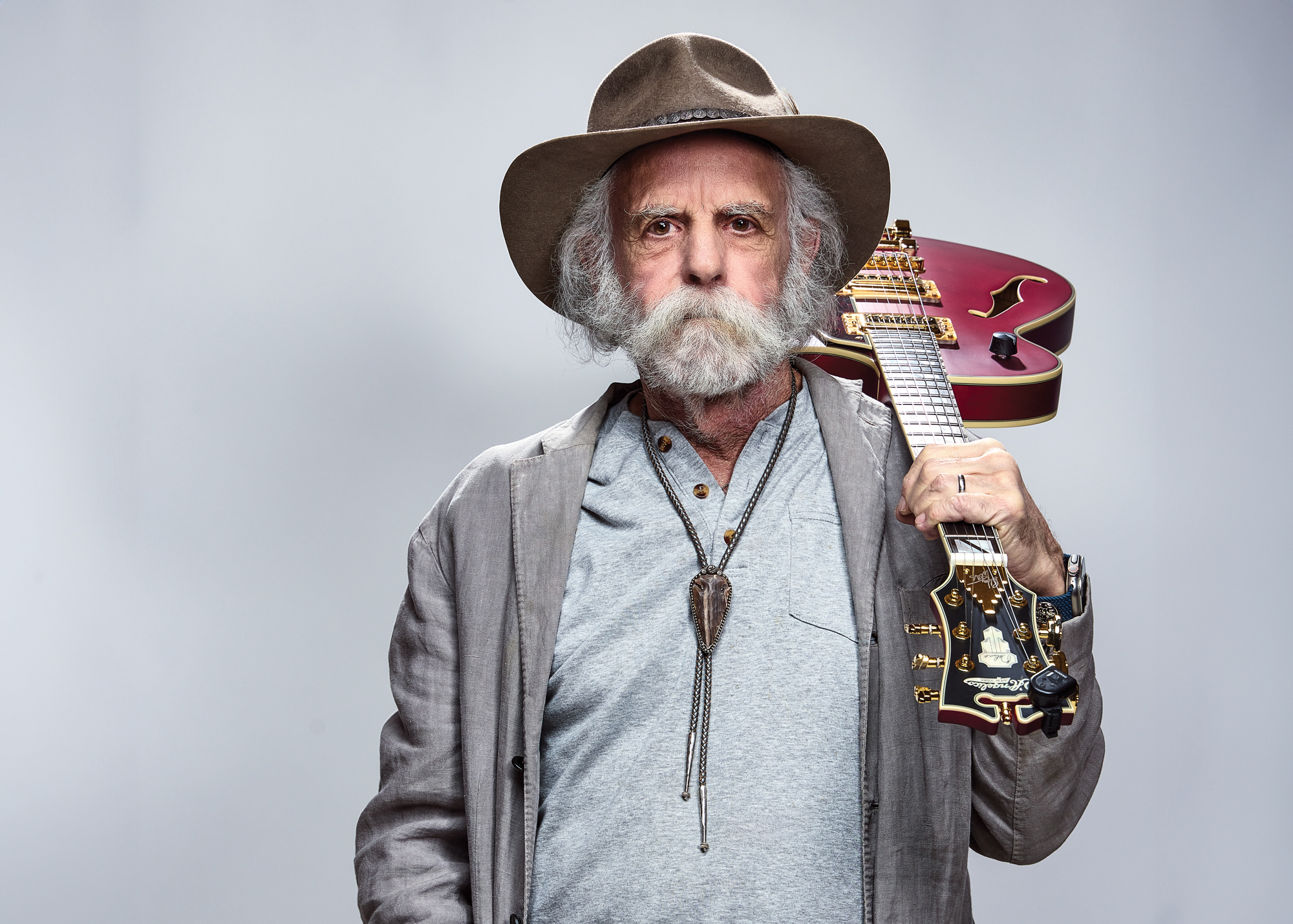
Bob, your main guitar lately has been a Fender Stratocaster. But back in the Grateful Dead days, you weren’t really known as a Strat player. What drew you to the Strat?
Weir: “The one I’m using is a ’64. As for what drew me to playing a Strat, I can’t really say. Every day your tastes change. And it was just one morning, I sort of woke up and I didn’t want to hear the double-coil sound anymore.
“I’d been playing humbucker guitars for a while, and then I woke up and I wanted to play on a single coil. And you know, single coils, they get interfered with and all that kind of stuff, but they are richer [sounding].”
At The Sphere you alternated the Strat with a few other guitars – your signature D’Angelico semi-hollowbody, for one, and several Gibson Les Pauls, including a goldtop and a Black Beauty.
Weir: “My D’Angelico – it’s rich, too. The pickups get good high end, and it’s pretty versatile. There’s a lot you can do with it, a lot of sounds you can pull out. And I’ve actually got three old goldtops and a few more black ones. The goldtops, Joe Bonamassa found one, maybe two of them, for me.
“And then the other one, I was talking to my luthier and he was touting the praises of Gibson’s reissue of the ’50s goldtop. And I just said to myself, ‘Okay, I’ve gotta see what this is all about.’ That was my first one. And I was smitten by the goldtop, especially with the P90s in it. So now I have that one and the two older ones.”

John, you pulled out several unique guitars during the first Sphere residency, including a Fender Custom Shop replica of Jerry Garcia’s famous modded “Alligator” Stratocaster and a white Custom Shop Strat that had previously belonged to Jeff Beck. But you stuck primarily to two trusty PRS models – a McCarty 594 and, mostly, the “Dead Spec” version of your signature Silver Sky.
Mayer: “Yes. Basically 90 percent of the show is handled by the Dead Spec, and then there’s particular cases for the 594. That guitar, I call it the blowtorch.
“When I want to do late-’60s-Fillmore-acid-test Grateful Dead, kind of SG/Les Paul-burning stuff, the 594 is perfect for that. It also has probably the best humbucker neck pickup I’ve ever played on a guitar. So when I want to do that barrelhouse thing, I pick up that guitar.”
The Dead Spec, of course, is a customized take on your signature guitar, drawing inspiration from Jerry’s original Alligator. Your model has several modifications, including an Alembic Blaster preamp that boosts the signal with 3-14 dB of gain, along with brass hardware to enhance brightness and resonance. Jerry’s tone is not an easy thing to approximate, but I imagine having this guitar helps.
There are certain inalienable details in Jerry’s playing that are part of the music. It’s like if you were going to play Miles Davis music you have to have a mute for your trumpet
Mayer: “There are certain inalienable details in Jerry’s playing that are part of the music. It’s like if you were going to play Miles Davis music you have to have a mute for your trumpet.
“You could say that’s just a gear thing, but it’s part of the vocabulary. So if you’re playing Jerry’s stuff, you’ve got to push the front end of the amp a little bit more than you normally would.
“And then you’ve got to get a little more accent on the high end so that you can really pick those notes. Because there’s so much nuance in what Jerry was doing; he would use dynamics as a way to create motifs, almost like a horn player. So what you have to do is put a certain amount of boost in your signal so that you’re giving the amp slightly more in the front end than the makers intended.
“If you play at, like, a five out of a 10, then the amp is happy. That’s where you get that 'steel drum' thing. And if you hit it a little hard, you’re pushing the amp more than it wants to be pushed. If you can get certain notes to hit the red, that’s the magic, man. That’s where you can really have a blast.”
I assume the Alembic boost helps with that.
Mayer: “Yes, but that little trim pot in there, it’s pretty low. Lower than you might think. You wouldn’t get your money’s worth if that was a boost pedal, because it’s very, very subtle. But it’s just enough to feed the amp a certain amount of level so that it kind of stays on its toes.
“And another thing is that, of course, Jerry’s guitar had so much brass on it. That’s why the Dead Spec has a brass nut, a brass retainer bar over the strings. It’s trying to get that string to pass over as much brass surface as possible to get that ring out. Because we started to learn that that brassiness in the tone comes from… brass. [Laughs]”
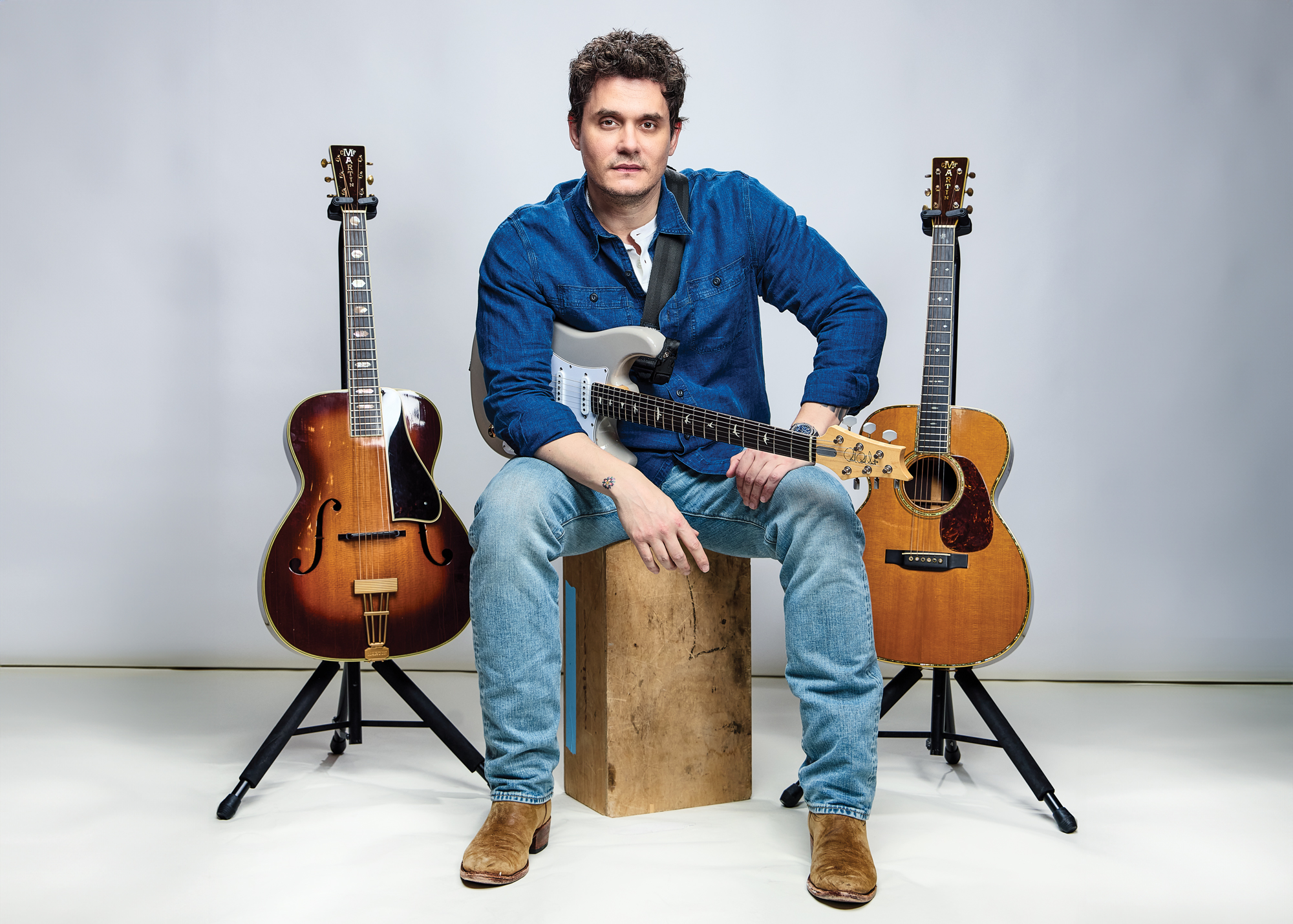
In a way, the Dead Spec Silver Sky represents a fusion of your guitar design with Jerry’s. There’s a similar balance you have to achieve in your playing – respecting Jerry’s legacy while still putting your own stamp on it.
My observation is that over the years with Dead & Company you’ve become more comfortable in this space, and now we hear more moments that break from what people might expect – guitar tapping in Slipknot! or St. Stephen, genuine shredding in All Along the Watchtower. Maybe you wouldn’t have done these things in 2015 or 2016.
Mayer: “That’s a really interesting observation. And the answer is very complicated because there are so many variables that were changing from year to year. Let me try to take you on a tour through them. Number one, my understanding of the music in terms of its arrangement, right?
“These song arrangements, early on I would start playing what I thought was the main full solo in a song. And then when I got to the end of that solo, I would realize, that’s the mini solo. [Laughs] Then Bob would go back and sing and I would go, ‘Oh, no, Bob thinks I wanted to take the mini solo and go that long on it. There’s still another solo to go, and that’s the big one.’ So that’s one of the things – understanding the arrangements.”
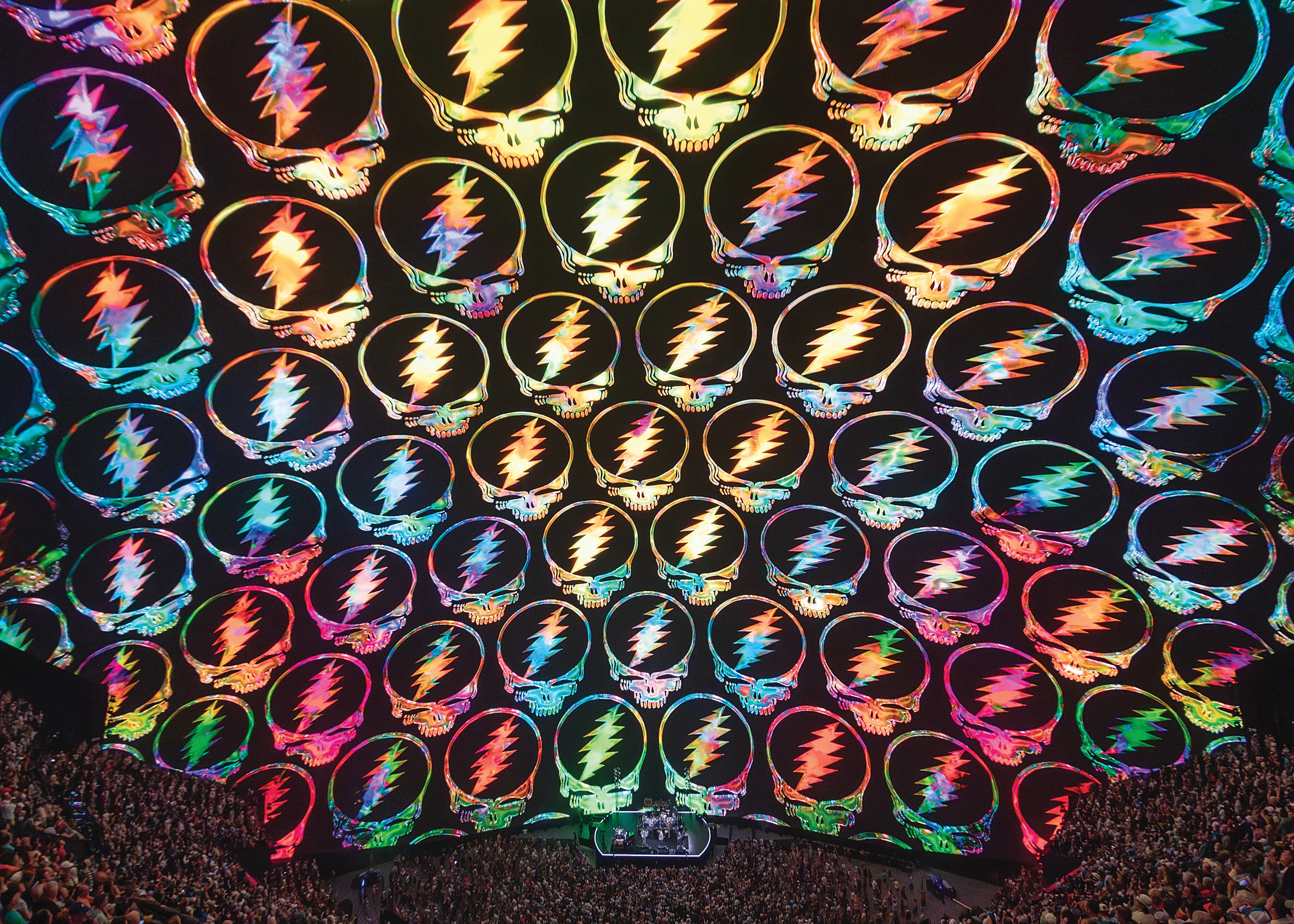
“Another thing is understanding the totality of the show in terms of the balance of what can be done. On a good night, I can earn myself the right to take one song, leave the [Grateful Dead] philosophy behind and go, you know, pure Jimi Hendrix on Watchtower. Because that’s a cover anyway, right?
“I definitely feel more latitude to do what I want to do on covers, because the main contributor to the style of that song isn’t Jerry Garcia. So I can step up and be me thinking about Jimi, which is, I think, the right thing to do. And it’s probably a good moment of release for the audience as well, because it opens up the vocabulary.
“Then you’ve got my interpretation of Jerry’s playing style, which took me at least four years to figure out how much was enough and how much was too much. When it came to subdividing the notes. When it came to how fast to play. This happens when you’re studying someone’s music and that music has existed for a period of time where there’s different approaches to that music.”
“The way Jerry played in ’69 is totally different than ’74. And ’74 is completely different from ’81. And ’81 is completely different from ’90. And then to add to that, there is the way in which his music, his guitar playing, has been interpreted since his passing. You have to take all of that into a ball, and then you go, ‘I’m gonna do my best.’
“And the constant here is that every tour I’ve ever done from 2015 on was the best I could have done at that moment. It was only after each tour was over that I would get back in the car and listen to more Grateful Dead recordings and realize I hadn’t come close.
“But the only way to realize you hadn’t come close is to have grown somewhere along the line, where you realize you now know better. So to me, every tour up until the Final Tour in ’23 was an opportunity to try to get it right, based on everything I had learned previously.”
Bob, has your guitar playing changed over the past 10 years with Dead & Company? And do you think having John as your guitar partner has led you to approach the music differently?
Weir: “Yes, but I always do that. And that, I think, is more on account of the fact that I just keep changing. I wake up in the morning and I’m kind of different. You take all those mornings that I woke up kind of different and you add ’em together, and after a while, you start amounting to a different guy. That’s kind of where I am now.
I feel like the two of us now have a very deep relationship, almost like a telepathic relationship. I know where I stand with him in the best of ways
John Mayer
“So I’d be reluctant to say that anybody, whether it be Jerry or John or whoever, drew anything out of me that didn’t already want to come out. But one thing I will say about John is that he’s one of those deep blues guys.
“He can listen to a blues tune on a boombox and tell you who it is, who’s in the band, what era it’s from, who wrote the song, all that kind of stuff, just on a quick listen. He can dissect the music, the various styles of playing. That’s somewhere we haven’t been yet that I find very interesting.”
John, what is something that you’ve learned from Bob over the years?
Mayer: “That’s a good question. And don’t think my taking a while to answer it means I have to fight to come up with something. It’s just that there’s so much. But the thing I’ve learned from Bob is to let it breathe. And that’s changed my playing a lot.
“I feel like the two of us now have a very deep relationship, almost like a telepathic relationship. I know where I stand with him in the best of ways. He knows where he stands with me in the best of ways. And we don’t have to talk about it.”
Bob, what have you learned from John?
Weir: “‘Don’t sweat the small stuff.’ I don’t know if there’s more to it than that. I’m constantly evolving, and so is he. And I can’t tell if it’s on account of what I’m getting from him, or if it’s something he’s getting from me, but we sort of make room, make allowances, for those kinds of developments.
I was surprised at how easy and how natural it was, right from the start. He had already mastered the kind of vocabulary I was used to on the instrument
Bob Weir
“And you know, he is a legendary guitarist. So I might be inclined to be a little bit under-spoken about what I express through my instrument. [pauses] But probably not.
“Because I remember the first night I played with him, when we were on TV. [In 2015, Mayer guest-hosted several episodes of The Late Late Show. During one of them, Weir, who was promoting the Grateful Dead’s upcoming Fare Thee Well concerts, appeared as a guest. Following an interview, the two performed a pair of Grateful Dead songs, Truckin’ and Althea together – a moment often credited with sparking the formation of Dead & Company.]
“I was surprised at how easy and how natural it was, right from the start. He had already mastered the kind of vocabulary I was used to on the instrument, to the point where we readily interacted. I don’t remember any moments where I was thinking to myself, what the hell is he trying to get at here?”
John, did you feel that in the moment?
Every night I get to go onstage is a shot at pitching a perfect game. And I can tell you, when I try to pitch a perfect game, I lose my shutout in about the beginning of the second song
John Mayer
Mayer: “Maybe with that song [Althea]. But there’s only about 140 other ones! [Laughs] I think anyone who plays Grateful Dead music could tell you, you may have one that you can make it through the gauntlet on. But then there’s another one waiting right around the corner that might take you another two years to get your head around. But I absolutely love the challenge.
“Before every show you will see me pacing my dressing room with Spotify open, with some version of some song I think is helpful for me to listen to before I go up to play the whole show, to just remind myself, ‘This is all it takes.’ Because I can overthink. You can hear me overthinking on the guitar sometimes.
“But every night I get to go onstage is a shot at pitching a perfect game. And I can tell you, when I try to pitch a perfect game, I lose my shutout in about the beginning of the second song. And I just love that moment where I go, ‘Whoops, not a perfect game. Have fun!’”

Up until now, Dead & Company has been strictly a live entity. But back in the early days of the band, 2016 or so, I recall interviews where Bob would talk about maybe going into the studio, either to record new material or to revisit songs that had only ever been played onstage by the Grateful Dead. Is this still a possibility?
Weir: “Oh, it’s something I would still love to do. We’ve got our best guys on it…”
Mayer: “It hasn’t been discussed in a while, but I have a boilerplate response to ideas like that. Which is, ‘If Bobby and Mickey want to do it, I want to do it.’ You know what I mean? I want to follow them where they want to go. So if that’s something that naturally comes up and it starts to materialize, you won’t see me being the one to say no.”
Clearly, you’re still up for anything. You did the Final Tour in 2023, and just a year later, reimagined the Dead & Company experience for the Sphere residency. Is there anything you’d still like to explore with this band?
Weir: “I wouldn’t mind taking it across the seas. This is a quintessentially American music that we’re doing, and I would love to play it for people everywhere. It would be nice to be able to do that. Because we put on a pretty tight show.
“And for what it’s worth, these are the same songs we’ve been playing all along, but we’ve somehow learned to make it a little more accessible. So whereas people from other cultures may have heard us in the past and maybe were not really able to relate, I think we could do better now.”
What about you, John? As the guy who took the lead in helping to manifest the Sphere experience, what’s the next frontier for Dead & Company?
Mayer: “Well, right now someone somewhere is coming up with an idea that’s so ahead of its time, I couldn’t think of it. But I like that they think of, and for the last 60 years have thought of, Grateful Dead – even though we’re not Grateful Dead, but Bob and Mickey represent that – as one of the first bands you would think to ask to be a part of these ideas.
“Because the mission statement has always been forward-facing. The music is so vast, they’re who you’d want to use for whatever your technology is. So I think it made sense to do the Sphere. And whoever dreams up the next something incredible and wants us to be a part of it? I would never say no to that kind of experimentalism.”
- This article first appeared in Guitar World. Subscribe and save.
Rich is the co-author of the best-selling Nöthin' But a Good Time: The Uncensored History of the '80s Hard Rock Explosion. He is also a recording and performing musician, and a former editor of Guitar World magazine and executive editor of Guitar Aficionado magazine. He has authored several additional books, among them Kurt Cobain: Montage of Heck, the companion to the documentary of the same name.
You must confirm your public display name before commenting
Please logout and then login again, you will then be prompted to enter your display name.









